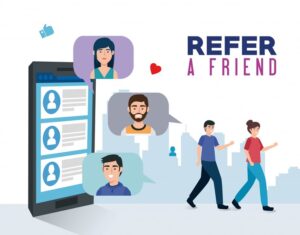Unlocking Business Success: Innovative Loyalty Programs for SMEs
Introduction
In the competitive landscape of small and medium-sized enterprises (SMEs), nurturing customer loyalty is paramount for sustained success. One powerful tool in achieving this goal is the development of innovative loyalty programs. In this comprehensive guide, we’ll delve into the intricacies of crafting loyalty initiatives that not only foster strong bonds with your customer base but also drive profitability and growth for your business.
How to Develop Innovative Loyalty Programs
Understanding Customer Behavior: The Foundation of Loyalty Programs
To create effective loyalty programs, it’s essential to delve into the psyche of your target audience. By analyzing consumer behavior patterns, preferences, and pain points, businesses can tailor their loyalty initiatives to resonate with their clientele effectively. Utilize data analytics and customer feedback mechanisms to gain valuable insights into what motivates your customers.
Crafting Personalized Rewards: Meeting Unique Needs
Personalization is key in modern loyalty programs. Gone are the days of one-size-fits-all rewards. Today’s consumers seek personalized experiences that cater to their individual preferences. Incorporate segmentation strategies to tailor rewards based on factors such as purchase history, demographics, and engagement level. By offering personalized incentives, businesses can deepen customer relationships and foster a sense of exclusivity.
Embracing Digital Innovation: The Rise of Tech-Driven Loyalty Solutions
In the digital age, technology plays a pivotal role in shaping loyalty programs. From mobile apps to AI-powered recommendation engines, leveraging innovative technologies can revolutionize the way businesses engage with their customers. Explore digital loyalty platforms that offer seamless integration, real-time tracking, and interactive features to enhance the user experience. Embracing digital innovation not only boosts program effectiveness but also positions your brand as forward-thinking and customer-centric.
Building Emotional Connections: Beyond Transactions
Successful loyalty programs go beyond mere transactions; they foster emotional connections between brands and customers. Implement strategies that evoke positive emotions and resonate with your audience on a deeper level. Whether through heartfelt messaging, memorable experiences, or philanthropic initiatives, aim to create meaningful interactions that instill a sense of belonging and attachment.
Measuring Success: Metrics for Evaluation and Optimization
Effective measurement is crucial for the continuous improvement of loyalty programs. Define key performance indicators (KPIs) such as customer retention rate, repeat purchase frequency, and net promoter score (NPS) to gauge program efficacy. Regularly analyze data insights to identify areas for optimization and refinement. By adopting a data-driven approach, businesses can iteratively enhance their loyalty initiatives to align with evolving customer needs and market dynamics.
FAQs (Frequently Asked Questions)
What are the benefits of implementing loyalty programs for SMEs?
Loyalty programs offer numerous benefits for SMEs, including increased customer retention, higher average order value, enhanced brand loyalty, and valuable data insights for targeted marketing efforts.
How can SMEs ensure the success of their loyalty programs?
SMEs can ensure the success of their loyalty programs by focusing on personalization, leveraging digital tools for engagement, fostering emotional connections, and continuously measuring and optimizing program performance.
Are there any pitfalls to avoid when developing loyalty programs?
Common pitfalls to avoid include offering generic rewards, neglecting to segment your audience, overlooking the importance of mobile optimization, and failing to track and analyze program performance metrics.
How can SMEs leverage customer feedback to improve their loyalty programs?
SMEs can leverage customer feedback through surveys, reviews, and social media interactions to gain insights into customer preferences, pain points, and satisfaction levels. This data can then be used to refine and optimize loyalty program offerings.
What role does technology play in modern loyalty programs?
Technology plays a crucial role in modern loyalty programs, enabling businesses to offer seamless digital experiences, personalized recommendations, gamification elements, and convenient redemption options across multiple channels.
How can SMEs ensure their loyalty programs stand out in a crowded marketplace?
SMEs can differentiate their loyalty programs by focusing on creativity, innovation, and exceptional customer service. By offering unique rewards, exclusive experiences, and personalized interactions, businesses can capture the attention and loyalty of their target audience.
Conclusion
In conclusion, developing innovative loyalty programs is a strategic imperative for SMEs seeking to thrive in today’s competitive business landscape. By understanding customer behavior, embracing digital innovation, fostering emotional connections, and measuring program success, businesses can cultivate lasting relationships with their clientele while driving sustainable growth and profitability.




